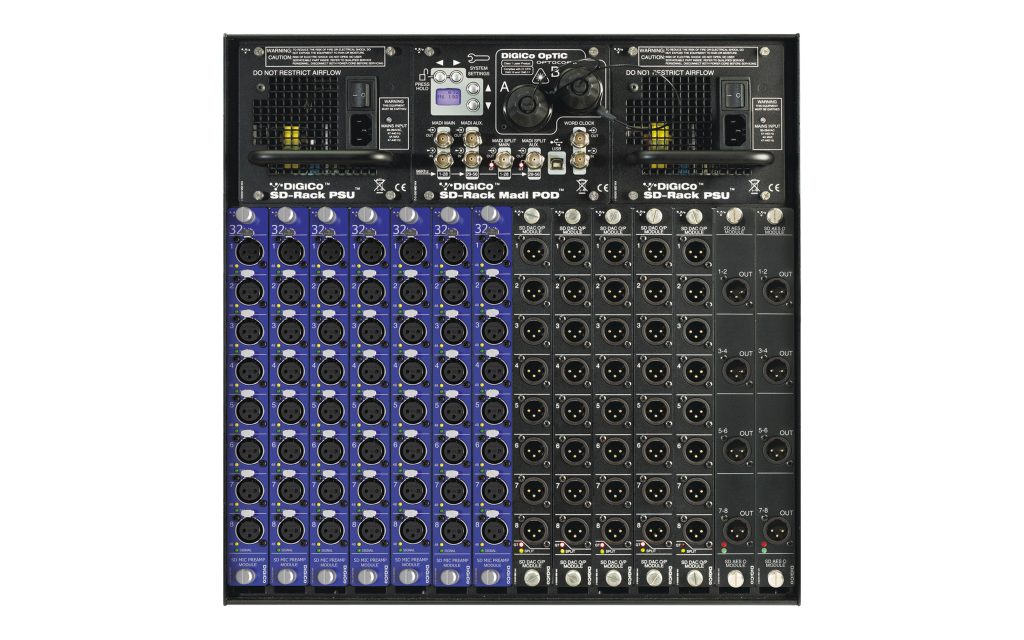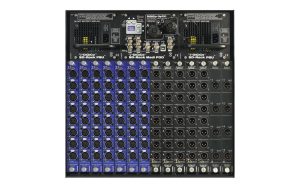With support for up to 192kHz high resolution analogue I/O converters plus a comprehensive range of digital formats, it’s no wonder that the SD-Rack is accepted as the finest I/O rack available.

With support for up to 192kHz high resolution analogue I/O converters plus a comprehensive range of digital formats, it’s no wonder that the SD-Rack is accepted as the finest I/O rack available.
Inputs:
Up to 56
Outputs:
Up to 56
Size:
10U Rack-Mountable
I/O:
HMA Optocore, MADI BNC


Delivery Options Available
Serviced & Quality Approved
Flexible Rental Periods
Based on the same Stealth FPGA technology as the world-renowned SD-Range of consoles, the SD-Rack can run on the optical loop at 96KHz, while providing a down-sampled 48KHz feed from one of the MADI output streams; ideal for a broadcast truck split. The result is industry-leading A/D conversion complete with DiGiCo’s famous Gain Tracking™, meaning all consoles benefit from +/-40dB of digital gain.
Once a user has set the gain on each channel, every console on the loop can Gain Track their own mixes, and if any tweaking of analogue gain settings is required then each Gain Tracked channel will automatically compensate to ensure the mix remains the same. Best of all, should clipping occur, any of the consoles on the loop can take control of an analogue gain and make the necessary adjustments without affecting anyone else’s mix.
The SD-Rack’s 14 slots give you up to 56 inputs and 56 outputs, and users can choose whether to connect the SD-Rack to the console using Optocore optical fibre connectivity or MADI. When running at 48kHz, the two MADI ins and outs provide 56 fully redundant input and output channels via duplicate connections. When running at 96kHz, the SD-Rack delivers a full complement of 56 channels of MADI across the dual MADI ports.
Lastly, for ease of use the SD-Rack offers hot swappable interface cards with are automatically identified and configured, plus a top-mounted, hot swappable power supply.
No matter the size of the rack you choose, up to 14 DiGiCo I/O racks can run on a single optical loop, while as many as 28 can be accommodated on a dual loop system. This, coupled with the ability for any of the five consoles that can sit on one optical loop to receive all inputs and individually address output slots on any rack, gives the engineer or system designer unprecedented versatility.